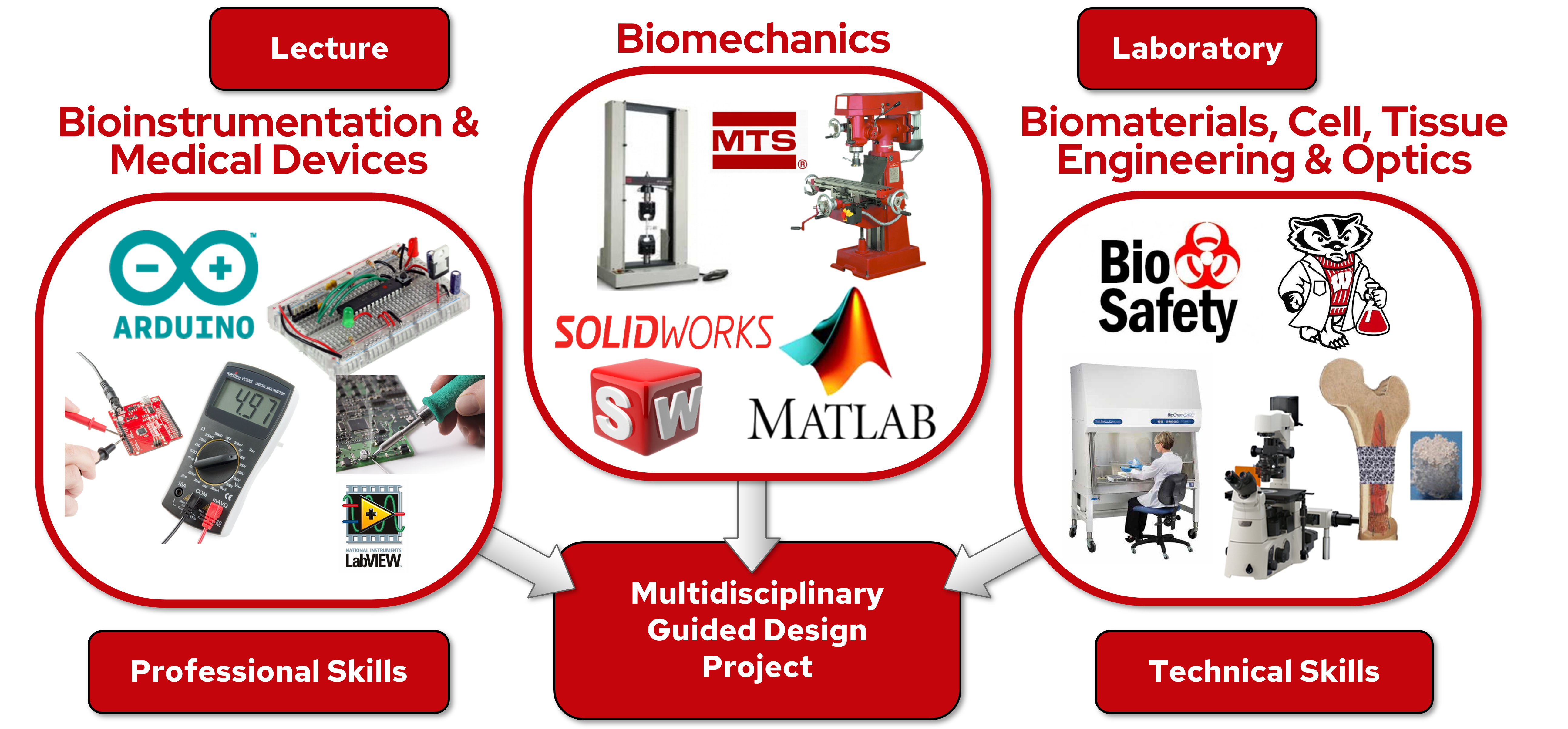About the BME Undergraduate Design Curriculum
Design Throughout The Curriculum
The undergraduate program was founded with design as the backbone of the curriculum. We developed a rigorous seven semester, team-based design sequence for our undergraduates to solve real-world, client-based design problems. This design sequence breaks down class boundaries, forms mentored relationships, actively involves each student in the evolution of the design course and department, and engages the students in active learning.
Submit a Project for BME DesignProject News
Since the start of the BME Design Program, a number of projects has become patented, published, or highlighted in the press.
View Project NewsCourse Sequence
Students work in teams of four to six to solve biomedical engineering design problems. In each of client-based design courses (BME 200, 300, 301, 400 and 402), the students choose a real-world project from a client list composed of faculty throughout the university (particularly engineering, medical and life sciences), clinicians, people with specific biomedical challenges, and industry. Teams are advised closely by the Design Faculty which is a group of Biomedical Engineering faculty and instructors who oversee and meet weekly with two to four projects each.

Design Curriculum Phases
Introduction to Design
Freshman in InterEGR 170 work across displicines to solve real-world challenges that general address an unmet need in our community.
Learn About InterEGR 170Peer Mentoring
First semester sophomores in BME 200 are teamed up with, mentored, and in part advised by first semester juniors in BME 300 on solving a real-world client-based design project achievable in one semester. This model of sophomore/junior teams promotes peer-to-peer learning and enhances leadership qualities.
Guided Design Fundamentals
Second semester sophomores in BME 201 work in teams to solve a guided project using multidisciplinary hands-on technical (including electronic circuits, programming, 3D modeling in SolidWorks, machining and fabrication, and laboratory techniques) and professional design-based skills taught during the lecture and laboratory sessions.

Design Communication
Second-semester juniors in BME 301 start a more difficult real-world client-based design project that usually leads toward their senior capstone design course. The intent is to instill in them the confidence to complete the design process on their own. They also build on their technical writing skills and earn their communications b requirement through assignments that focus on career and professional development, library services, universal design, engineering ethics, and other technical writing activities.
Senior Capstone Design
Seniors in BME 400 and BME 402 complete and implement a more complicated real-world client-based design. Some design teams continue their BME 301 project. BME 400 is the semester in which the major work for the project will be completed, then the final testing and evaluation is finalized in BME 402. Teams perform extensive research to fully develop and test their design. They begin to work toward filing a patent and preparing a publication. All students complete an outreach requirement, such as by giving a talk or organizing a hands-on activity in a K-12 classroom.
Learn About Community OutreachTong Distinguished Lecture Series
Sponsored by Peter and Janet Tong and the Tong Family Foundation
Successful entrepreneurs and innovators in the biomedical industry are invited to address the entire BME Design class at a special event.
Learn More and Watch PresentationsSponsors
The BME Design program would only be possible with our sponsors.
View our Sponsors